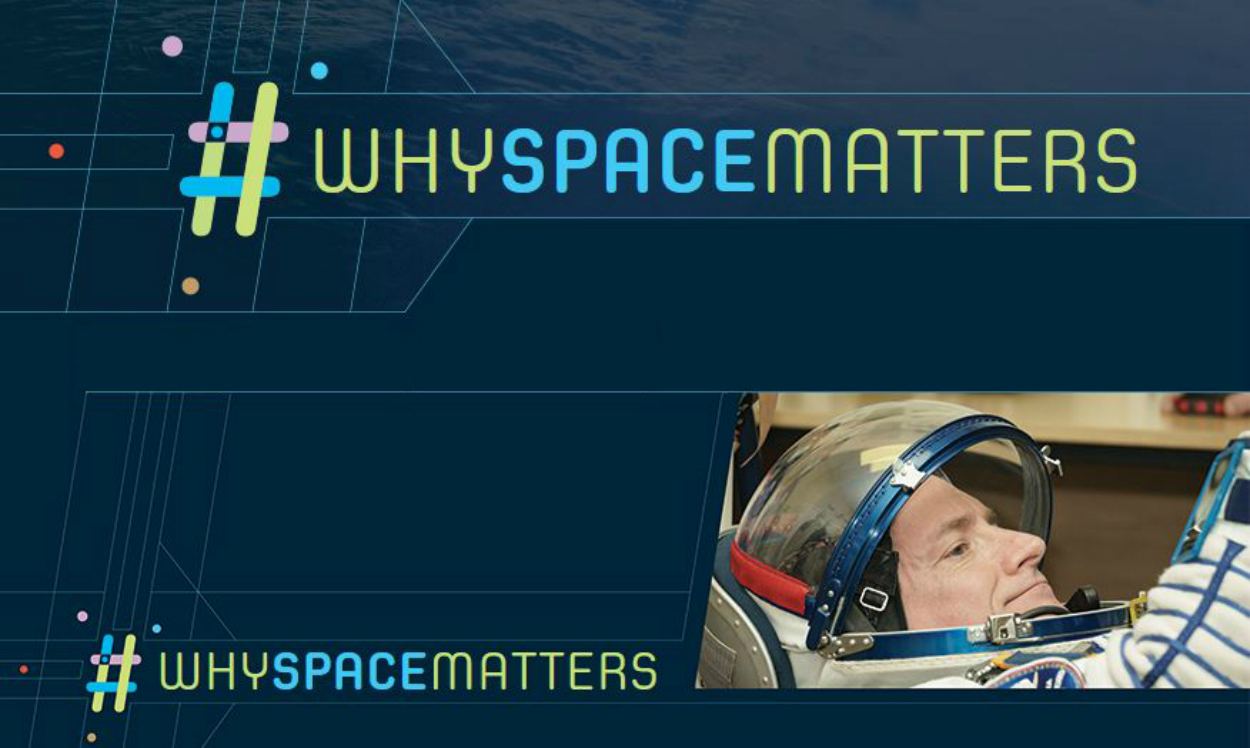
NASA and the United Nations Office for Outer Space Affairs (UNOOSA) have launched a global photography competition to highlight how the vantage point of space helps us better understand our home planet, improve lives, and safeguard our future by aiding sustainable development on Earth.
To highlight the role of space-based science and technologies and their applications on Earth, NASA and UNOOSA are inviting the public to submit photos depicting why space matters to us all in our daily lives. To participate, post a picture and description on Instagram using the hashtag #whyspacematters and tagging @UNOOSA.
NASA astronaut Scott Kelly, who is three months into a one-year mission aboard the International Space Station, will announce the winning photo each month by posting it from his Instagram account @StationCDRKelly.
Kelly and Russian Cosmonaut Mikhail Kornienko are spending a year in space to improve our understanding of the medical, psychological and biomedical challenges faced by astronauts during long-duration spaceflight. Kelly will set a single-mission record for a U.S. astronaut, and the joint expedition will be an important step in human space exploration and research into the effects of long-term space habitation as part of NASA’s journey to Mars.
“We learn something every time we go to space. And the International Space Station is one of the world’s greatest laboratories – where we are helping with advances in medicine, biology, chemistry and materials sciences,” said Kelly. “It is the pursuit of these advances off the Earth that help improve lives on Earth. And that is why I am so committed to space exploration and embarking on this year-long mission. I look forward to seeing the images from people around the world on how space technology has impacted them where they live.”
UNOOSA Director Simonetta Di Pippo said it is “an honor to have Scott Kelly share his experience in space with the United Nations. This campaign will help to promote the use of space science and technologies in such areas as disaster risk reduction, tracking the effects of climate change and in the equality of access to education and telemedicine.”
With the recent installation of NASA’s International Space Station-Rapid Scatterometer (ISS-RapidScat) and the Cloud-Aerosol Transport System (CATS) instruments on the space station, the ISS is being used for full-fledged Earth science research.
Scientists worldwide use NASA data to tackle some of the biggest questions about how our planet is changing now and how Earth could change in the future. From rising sea levels to the changing availability of freshwater, NASA enables studies that unravel the complexities of our planet from the highest reaches of Earth’s atmosphere to its core.
The International Space Station is a convergence of science, technology and human innovation that enables us to demonstrate new technologies and make research breakthroughs not possible on Earth. It has been continuously occupied since November 2000 and, since then, has been visited by more than 200 people and a variety of international and commercial spacecraft. The space station remains the springboard to NASA’s next giant leap in exploration, including future missions to an asteroid and Mars.
For more information about the International Space Station and its crews and research, visit:
https://www.nasa.gov/station
For more information about the #whyspacematters competition, visit:
http://www.unoosa.org/oosa/contests/whyspacematters/index.html
-end-
Stephanie Schierholz
Headquarters, Washington
202-358-1100
stephanie.schierholz@nasa.gov
Nicole Cloutier-Lemasters
Johnson Space Center, Houston
281-483-5111
nicole.cloutier-1@nasa.gov

























